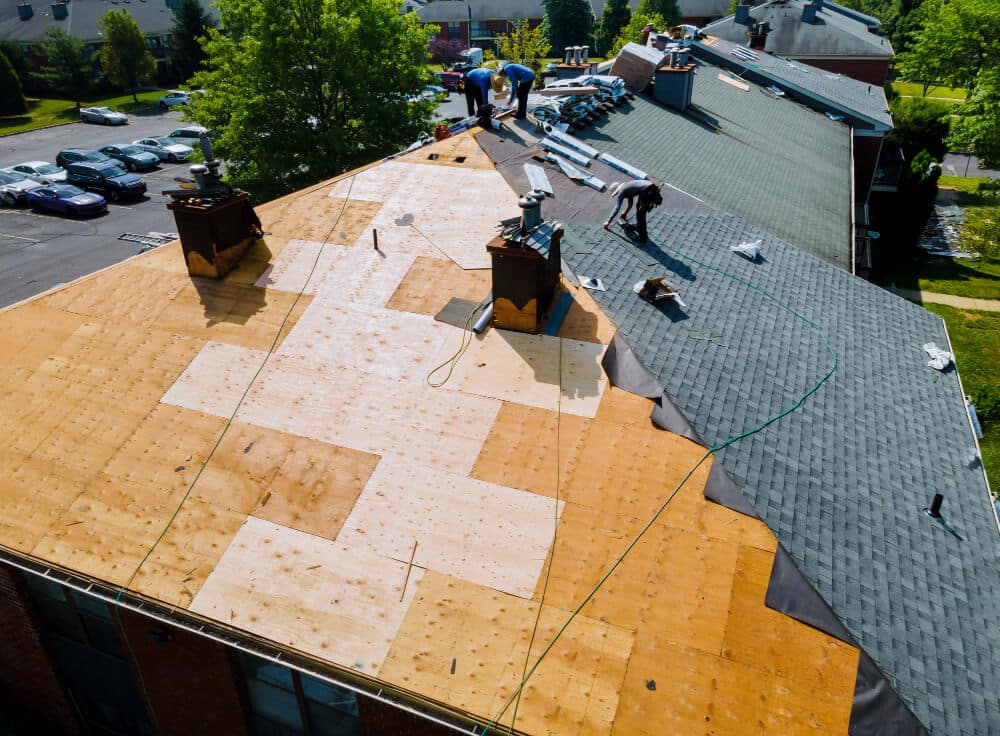The Art of Roof Replacement: What Every Homeowner Should Know

Roof Replacement Guide
Roof replacement is a significant aspect of maintaining a home’s integrity and value. It’s not just about putting on new shingles; it’s an art that involves careful planning, selecting suitable materials, and understanding the impact on your home’s overall health. Here’s what every homeowner should know about the process:
1. Signs You Need a Roof Replacement: Recognizing when it’s time for a roof replacement is essential for maintaining your home’s health and safety. Key indicators include:
- Missing or Broken Shingles: These can lead to leaks and structural damage.
- Leaks: Look for signs of water damage in your attic or ceiling.
- Sagging: This indicates structural issues and can indicate trapped moisture or rotting boards.
- Daylight Through Roof Boards: If you can see the light from your attic, it means your roofing underlayment is failing.
- Age of Roof: Most roofs have a 20-25-year lifespan. If yours is older, it might be time for a replacement.
- Granules in Gutters: Excessive granule loss from asphalt shingles is a sign they’re wearing out.
2. Choosing the Right Materials: Selecting the suitable material is crucial for longevity and performance:
- Asphalt Shingles: Popular due to their cost-effectiveness and ease of installation.
- Metal Roofing: Highly durable, reflects solar radiant heat, and can be more energy-efficient.
- Slate and Clay Tiles: Offer a distinctive look and longevity but can be more expensive and require sturdy structural support.
- Wood Shingles or Shakes: Provide a natural look but require more maintenance and are not as fire-resistant.
- Synthetic Roofing: Emerging materials like rubber, plastic, or polymer can mimic other types but with increased durability and less maintenance.
3. The Importance of Proper Installation: Even the best materials can fail if not installed correctly:
- Expertise: Ensure your contractor has a solid track record and expertise in roofing.
- Ventilation: Proper attic ventilation is crucial for preventing moisture buildup and extending the life of your roof.
- Flashing and Sealing: These prevent water from penetrating the roof’s joints.
- Building Code Compliance: Your installation should meet local building codes.
4. Understanding Roofing Warranties: Warranties provide peace of mind and protection:
- Manufacturer’s Warranty: Covers defects in roofing materials.
- Workmanship Warranty: Offered by the contractor to cover installation issues.
- Duration and Terms: Understand how long the warranty lasts and what it covers.
- Transferability: Some warranties can be transferred to new homeowners.
5. Considering Energy Efficiency: Energy-efficient roofing can significantly lower heating and cooling costs:
- Cool Roofs: Designed to reflect more sunlight and absorb less heat.
- Proper Insulation and Ventilation: Reduces heat loss in winter and keeps your home cooler in summer.
- Energy Star Rated Materials: Can qualify for tax credits and reduce energy bills.
- Solar-Ready Roofs: If considering solar panels, your roof should be structurally sound and properly oriented.
6. Budgeting for a Roof Replacement: Planning your finances for a roof replacement is critical:
- Getting Multiple Quotes: Shop around and get several estimates to ensure you’re getting a fair price.
- Cost Factors: Factors influencing cost include the size of the roof, the materials chosen, labor, and the complexity of the job.
- Unexpected Costs: Be prepared for potential unforeseen expenses like structural repairs.
- Financing Options: Look into loans, credit options, or even grants available for home improvements.
- Investment Perspective: Consider the long-term benefits, such as energy savings and increased home value.
7. The Impact on Home Value: A new roof is a valuable asset in real estate:
- Curb Appeal: A new roof enhances the overall appearance of your home.
- Buyer Confidence: A new roof reassures buyers about the home’s condition and can speed up the sale process.
- Return on Investment: A new roof can offer a significant return, often recouping a substantial portion of the cost.
- Energy Efficiency: Modern roofing can improve energy efficiency, a selling point for eco-conscious buyers.
8. Dealing with Roofing Permits: Understanding the legal requirements is essential:
- Why Permits are Necessary: They ensure your roof meets safety standards and local building codes.
- Contractor’s Responsibility: A reputable contractor will manage the permit process, but being informed is good.
- Impact on Insurance: Proper permits ensure that your roof is insurable and complies with policy requirements.
9. Preparing for the Replacement Process: Minimize disruption during the replacement:
- Securing the Interior: Remove or cover items in the attic and secure wall hangings to prevent damage from vibrations.
- Family and Pet Safety: Plan for the safety and comfort of pets and family members, considering noise and debris.
- Access for Contractors: Ensure clear access to your roof and adequate space for materials and debris removal.
10. Post-Installation Maintenance: Maintaining your new roof is critical to its longevity:
- Regular Inspections: Have your roof inspected annually, especially after severe weather.
- Gutter Maintenance: Keep gutters clean to prevent water buildup and damage.
- Dealing with Minor Repairs: Address small issues promptly to prevent them from becoming major problems.
- Documentation: Keep all your roof-related documents, warranties, and maintenance records organized for future reference.
In conclusion, roof replacement is a vital and complex process. Understanding these key aspects ensures that homeowners can make informed decisions, resulting in a durable and aesthetically pleasing outcome. Remember, your roof is not just a part of your home; it’s a long-term investment in your family’s safety and comfort.



